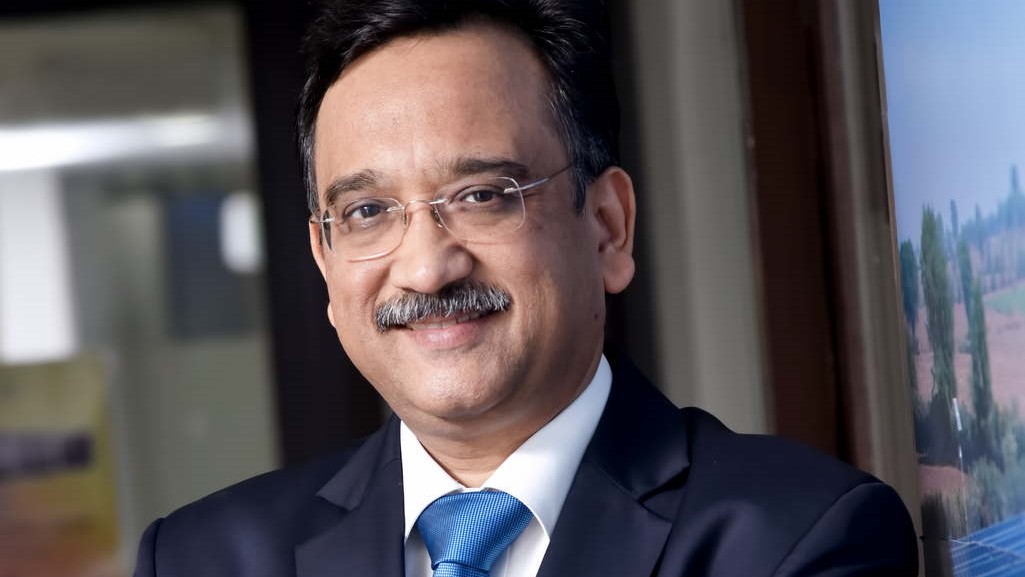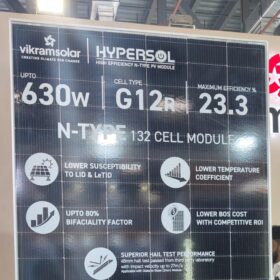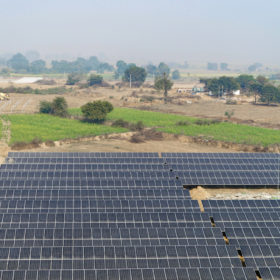India, one of the most diversified energy markets in the world, has recently become the lowest-cost producer of solar power. This reflects a steady and encouraging shift toward renewable power—a shift that’s in line with the targets set by the government.
At the Climate Action Summit that was held earlier this year, Prime Minister Narendra Modi had announced India’s intention of scaling up renewable energy generation to 450 GW by the year 2030. The government, on its part, is undertaking many large-scale sustainable power projects and strongly promoting green energy.
The budget for the Ministry of New and Renewable Energy has been increased from the previous year, and a significant outlay has been earmarked for wind- and solar-powered projects and for the creation of a green energy corridor. These developments augur well for renewable power in India, especially solar power.
The government is looking to promote not just solar power but other eco-friendly alternative fuels like biomass power too in order to tackle the problem of air pollution and reduce crude oil import bills.
Promoting electric vehicles and tightening the noose around NOx emissions from thermal power plants are two other components of an integrated approach towards green economy.
Solar on track
Solar power has grown appreciably, since the National Solar Mission was launched in 2010. The price of a unit of solar power, which was 17 rupees then, is around 2.44 rupees at present. The cost of setting up solar photovoltaic projects has reduced by 80% in the eight years from 2010 to 2018. The total installed capacity of solar power increased by a factor of 600 between 2010 and 2016, and fivefold between 2016 and 2019 to stand at 30 GW at present.
At this rate, India will achieve, or come close to achieving, its target of 100 GW for 2022. India was ranked fifth in the world in terms of installed solar capacity at the beginning of the year; it’s a record that we can, and should try to, better in the years ahead.
Biomass, potential untapped
In an economy like India’s, where agriculture plays a significant part, biomass power is a cleaner and more efficient alternative to conventionally generated power. Biomass power plants in India are based mostly on agricultural waste and woody biomass.
One of the advantages of using biomass is that it can be used to produce many more products of value. By fractioning biomass, it can be separated into lignin, cellulose and hemicellulose with high yields and purities. These fractions can be used to replace fossil-derived raw materials in many industrial and consumer sectors. It’s a smart solution for clean air.
Biomass power generation, which stood at 9 GW in the year 2018, is expected to touch 10 GW by 2022—a rather modest target that can be attributed to factors such as the lack of mechanization in Indian agricultural sector, defragmented land holdings, and the fact that most Indian farmers are either small or marginal.
Moreover, it has been observed in India that biomass prices tend to increase fast after power projects are commissioned. The generation of biomass power would be cheaper than coal if biomass could be sourced economically. However, in present circumstances, it is difficult to run a power plant solely on biomass economically.
Coal crackdown
Even as renewable power grows in India, it is very likely that coal will continue to account for most (60-80%) of the power generated in the country over the coming decade. It is important for India to be mindful of its greenhouse gas emissions and particulate matter (PM) and NOx pollution, especially in view of its commitments to the Sustainable Development Goals.
The government has defined new permissible NOx emission levels for thermal power plants to achieve by the year 2022.
There are NOx reduction technologies available that enable conventional power plants to not only reduce emissions but also assess and improve their operations. These include pre-combustion and in-combustion control technologies such as coal washing and blending; installation of low NOx burners, and over-fire air inside the boiler.
Injecting limestone into the furnace is effective in reducing SOx emission. Over the past year, large organizations like Hindalco, in the private sector, and NTPC, in the public sector, have adopted NOx reduction technologies. Others would do well to follow suit.
EV transition
Electric vehicles (EVs) are considered by many as another means of controlling emissions. The Government of India had initially announced its intention to make India an all-electric-vehicles market by the year 2030. It was an ambitious target and had to be subsequently revised.
There is no doubt, however, that EVs will constitute a sizeable percentage of India’s vehicular mix over the coming decade. Surveys suggest that nine out of ten Indian consumers are willing to switch to EVs, provided there’s robust nation-wide infrastructure to support it.
Presently, however, EVs account for only one percent of total vehicle sales in India, most of which are two-wheelers.
It is expected that the reduction in goods and services tax (GST) for EVs and electric chargers, and government schemes such as FAME India (Faster Adoption and Manufacture of (Hybrid and) Electric Vehicles) Scheme and The National Electric Mobility Mission Plan (NEMMP) will catalyse the development of the EV market in coming years. The second and latest phase of the FAME scheme also encourages the interlinking of renewable energy sources with the charging infrastructure for EVs.
The EV movement in India just needs a tipping point, and we should look forward to announcements and developments in this direction in the year to come.
Looking ahead
It’s good to have a vision for the future towards which all present efforts are directed. The government and the industry would do well to set for themselves small, intermediate targets and work towards realizing them. It’s a useful approach to have when aiming for transformations that will determine the prosperity and sustainability of the nation in the long term.
The views and opinions expressed in this article are the author’s own, and do not necessarily reflect those held by pv magazine.
This content is protected by copyright and may not be reused. If you want to cooperate with us and would like to reuse some of our content, please contact: editors@pv-magazine.com.








Dear Sanjay,
Thank you for writing an article which gives an essence of the energy market and the directions into which the government is looking into for decades to follow. I have a few questions on electricity generation through grid. Could you please let me know if we can discuss this over email?
Best regards,
Hemant